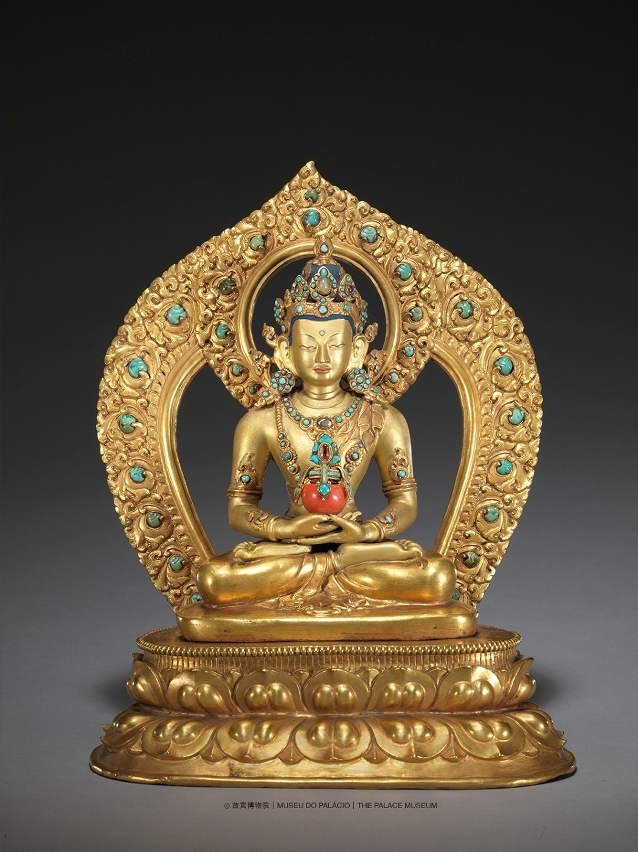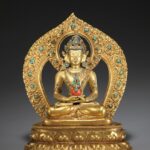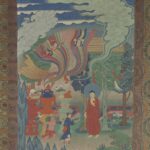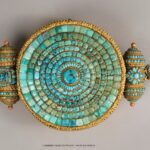 Amitayus Buddha / The 38th year of Qianlong reign, Qing dynasty (1773)
Amitayus Buddha / The 38th year of Qianlong reign, Qing dynasty (1773)
Organised by the Macao Museum of Art (MAM) under the Cultural Affairs Bureau, the Palace Museum, the Tibet Autonomous Region Cultural Heritage Bureau and the Tashi Lhunpo Monastery and co-organised by the Macao Foundation, with the support from the Macao Government Tourism Office and the Macao Daily News, the exhibition “Golden Eminence: Treasures from the Palace Museum and the Tashi Lhunpo Monastery” will be inaugurated on 15 December, at 6:30pm, at the Macao Museum of Art. The exhibition presents 137 pieces of treasures from the collections of the Palace Museum and the Tashi Lhunpo Monastery, bringing to the public the first overseas exhibition dedicated to the successive Panchen Lamas and Buddhist art of the imperial court. The public is welcome to visit.
Tibetan Buddhism boasts a long history and has played an important role in Chinese history since the 17th century. The Tashi Lhunpo Monastery, the representative monastery of Tibetan Buddhism’s Gelug lineage, has been the traditional seat of successive Panchen Lamas and also the artistic and cultural centre in the RearTibet. During the Qing dynasty, a close political relationship was established between successive Panchen Lamas and the imperial court, with frequent exchanges of offerings between the two parties. As a result, Tibetan Buddhism was gradually spread and promoted to the court of the Qing Dynasty. Among the relics of the Tibetan Buddhism collected in the Palace Museum, there are exquisite wares that were crafted in the Qing Imperial Workshops, as well as priceless gifts from the Mongolian and Tibetan regions. The exhibition is divided into three sections, namely “From Tashi Lhunpo Monastery to the Palace Museum”, “Art from the Tashi Lhunpo Monastery” and “Treasures of the Sixth Panchen Lama”, showing the interaction between Tibet and the court of the Qing Dynasty in terms of art and technology from the perspective of exchanges between successive Panchen Lamas and the court of the Qing Dynasty, as well as the contributions of successive Panchen Lamas in the unification and consolidation of a multi-ethnic country.
In order to allow the public to have an in-depth understanding of exhibits with special significance, various outreach activities will be launched during the exhibition period. The first lecture, themed “Tashilima Styles of Buddhist Statues in the Palace Museum’s Collection”, will be held at 7pm on 13 December, in which Ma Yunhua, a research fellow of the Palace Museum, will elaborate the diverse Tashilima styles in the Qing dynasty and their significant influence on the art of Buddhist statues in the court. The lecture will be conducted in Mandarin. The Chinese music performance “Music in MAM” will be held at 3:30pm on 17 December. The “Singing Bowl Performance” will be held at 5:30pm on 17 and 30 December; guided tours in Cantonese will be available in the afternoon on Saturdays, Sundays and public holidays from 20 December. All are welcome to participate. The “Dialogue with the Heart: Singing Bowl Workshop” will be held at 7pm on 17 and 30 December, in which participants will be able to experience Tibetan culture and tranquillity of mind through the sound of Tibetan singing bowls. Interested parties can obtain more information and register through the “Activity Registration” of the Macao One Account (activity.mo.gov.mo/activity-h5/) from today until 13 December. Selection will be made by drawing lots and admission is free.
The exhibition “Golden Eminence: Treasures from the Palace Museum and the Tashi Lhunpo Monastery” is held from 16 December 2023 to 17 March 2024. The MAM is open from 10am to 7pm (no admission after 6:30pm), including on public holidays, and is closed on Mondays. For more information about the exhibition and activity registration, please visit the MAM’s website at www.MAM.gov.mo.




